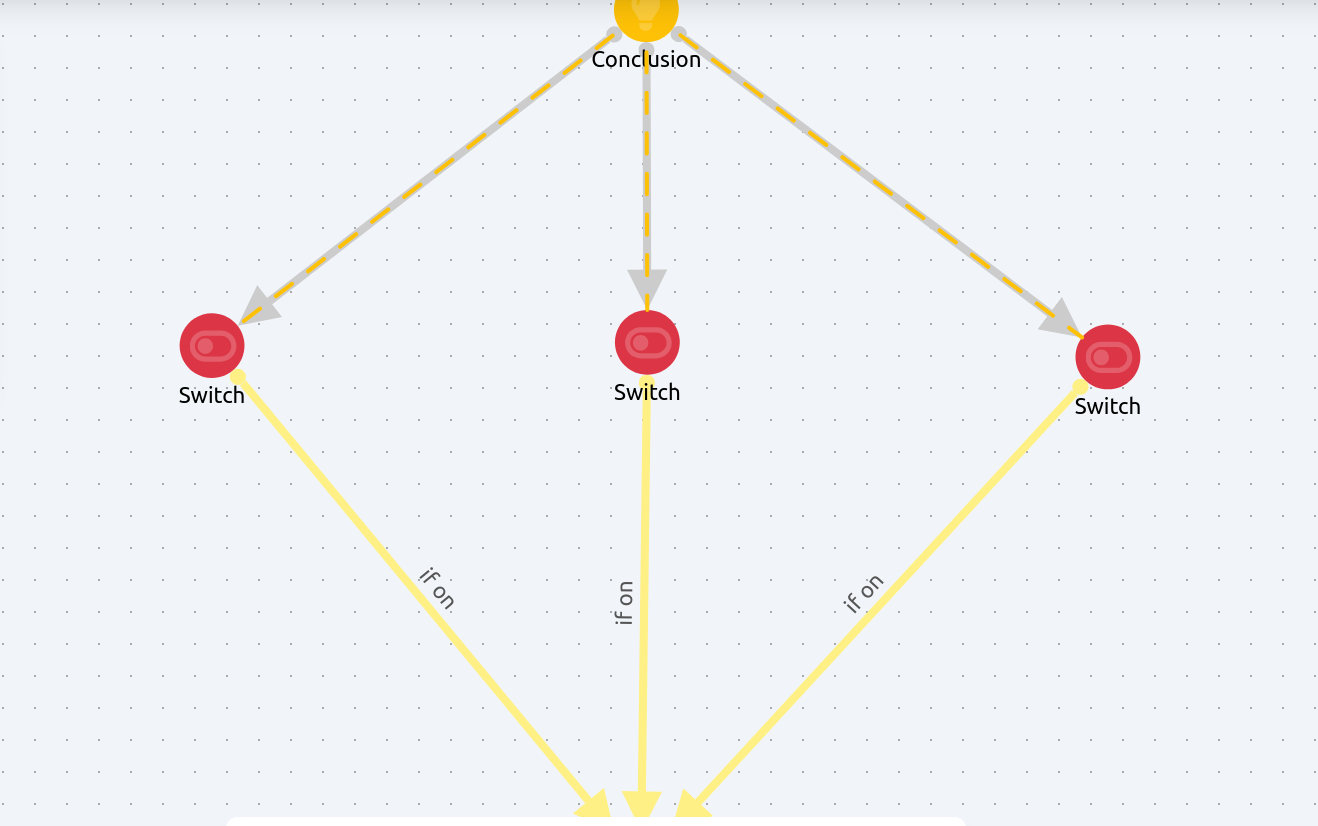Visual Logic Without Code - Can This Change the Way We Build Flow-Based Systems?

2025-07-07 by Chris
What if logical structures weren’t just part of a flow - but the flow itself?
What if you could build functional logic visually, with no hidden code at all?
With Wanderer, I’ve built a tool that explores exactly that idea.
It’s a new approach to flow-based programming: where structure is logic, and logic is executable - right in the browser.
What Makes Wanderer Different?
There are many no-code platforms out there. But almost all of them rely on hidden logic behind visual blocks:
- Embedded
if-elseconditions - Hidden functions
- Code-like config panels
Wanderer turns that upside down.
In Wanderer, edges are the logic.
You don’t write logic – you build it.
And when you're done, the graph executes itself, in real time, in your browser.
“Wait - aren’t edge conditions just code?”
Good question - and a fair one.
Wanderer does allow for tiny condition checks on edges - for example, an edge might check whether a connected switch node is "on".
But here’s the key difference:
- There are no function bodies, no branching logic, and no hidden code paths
- Edge conditions are always simple, explicit, and local
- The logic lives entirely in the structure:
You can see every decision - and understand it at a glance
It’s not about hiding complexity - it’s about structuring it visually.
Logic as Structure: Visual Gates
To demonstrate how powerful this model can be, I built a sample flow that includes four fundamental logic gates – entirely visual, fully working, and 100% no-code.
👉 Try it now (no login, runs in the browser):
🔗 Open the Logic Gate Demo Flow
In the flow, you’ll find:
- AND Gate
- OR Gate
- NOT Gate
- XOR Gate
You can toggle inputs using switch nodes - and observe how the graph reacts in real time.
When a gate is triggered, the builder's integrated chat explains which gate fired and why.
Example: How the AND Gate Works
In the AND section of the graph, several switches represent individual conditions.
Only if all of them are ON, the connected logic node is activated, and a message appears in the chat.
There’s no “if” statement.
No condition editor.
No code.
Just edges connecting stateful nodes.
The logic lives in the structure.
What’s Special About Each Gate?
| Gate Type | What You’ll See in the Flow |
|---|---|
| AND | All switches must be ON to activate the output node |
| OR | Any one (or more) switches can activate the output |
| XOR | Exactly one switch must be ON - no more, no less |
| NOT | One specific switch must stay OFF for activation to happen |
Each section is clearly labeled and isolated inside the flow.
You can reset the state, play around, and see how different input combinations affect the traversal and logic output - live.
How It Works Under the Hood
Wanderer uses:
- Depth-first graph traversal
- Typed edges (e.g.
must,may,not) - Node-local state, no global context
- A tick-based evaluation loop, with plans to support reactive triggers
Edges define everything:
- Which conditions are required (
must) - Which are optional (
may) - Which must not be true (
not)
It’s like building a circuit - but in a browser, and the circuit can talk.
Why This Matters
Visual flow builders often reach a ceiling:
- Too simple for complex logic
- Too messy when scaled
- Too code-like to stay no-code
Wanderer is an attempt to fix that.
If we make logic truly visible,
we make it understandable, shareable - and programmable.
Because when structure is the program,
you don’t need to write code - you just connect ideas.
👇 Try the Demo
You can open the flow and interact with it live, right now:
➡️ Launch the Logic Gate Demo Flow
- No registration
- Runs in your browser
- Completely free
Who This Is For
- Chatbot developers
- No-code experimenters
- UX designers & toolmakers
- People who build GPT assistants
- Educators teaching logic & flow
If you’ve ever wanted to build logic without writing logic, Wanderer might be for you.
Let’s Talk
I’d love feedback - and I’m curious:
Do you think this kind of logic modeling could change how we think about visual programming?
Hit me up with ideas, forks, or questions.
And if you're interested, I’ll publish a deeper article soon about how to combine gates, build real-world flows, and even generate structures using GPTs.
Stay curious - and keep building.
— Chris, Maker of Wanderer